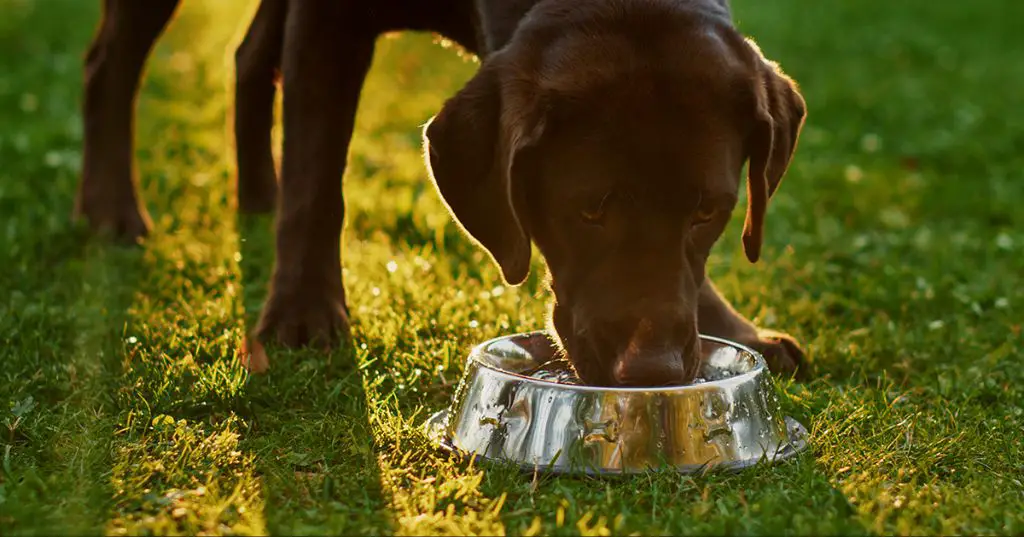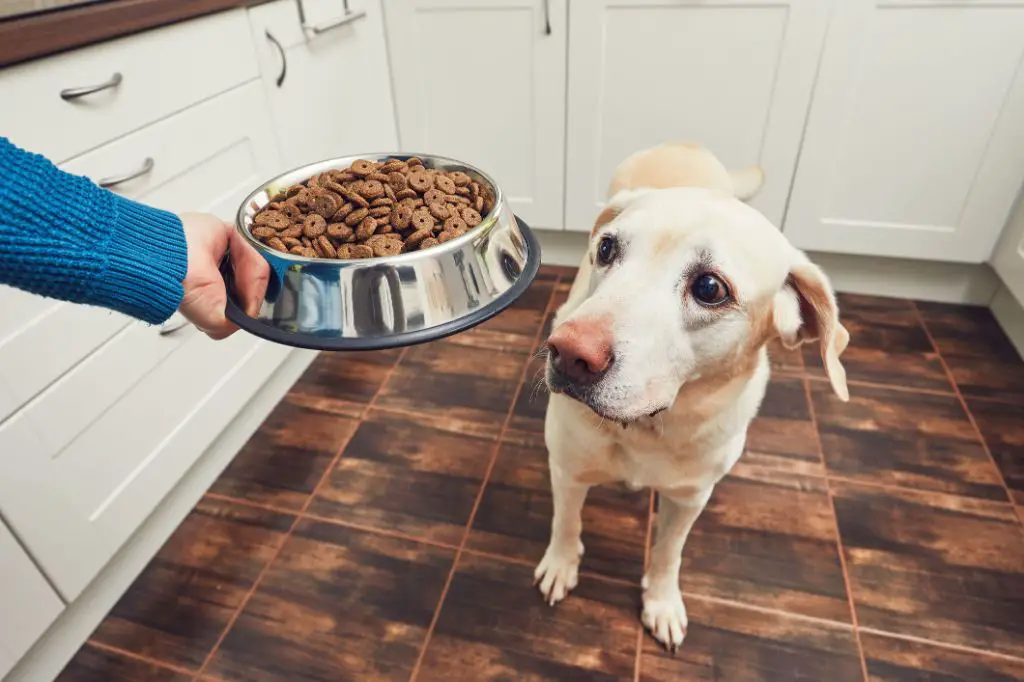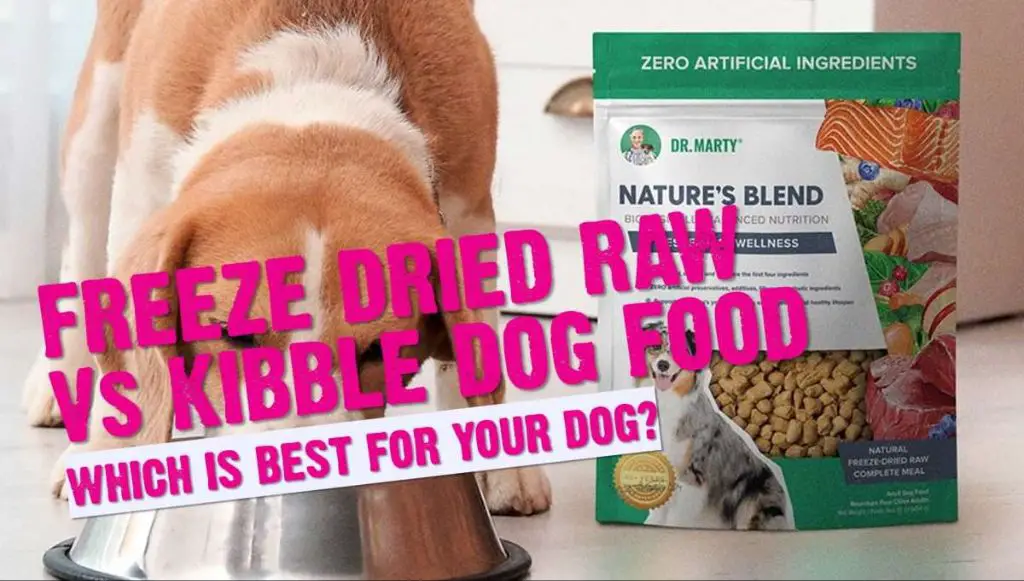Introduction
Feeding a dog only dry kibble is a common and convenient practice for many pet owners. However, there is an ongoing debate around whether a kibble-only diet provides all the nutrients a dog needs for a long and healthy life. With the rise in human-grade and fresh pet food options, some argue that dry food on its own is no longer adequate.
This article will examine the pros and cons of feeding a dog dry food exclusively. We’ll explore important factors like nutrition, life stage, breed size, and alternatives to mixing in or switching to wet, raw, or homemade meals. Our goal is to provide dog owners with the information needed to make the best diet decisions for their individual pets.
Pros of Feeding Only Kibble
Feeding your dog only dry kibble certainly has some advantages. Here are some of the main pros of sticking to an all-kibble diet for your canine companion:
Convenience
Kibble is extremely convenient. You can easily pour it into a bowl, store it in a container, and take it on trips. Dry food doesn’t require any refrigeration or preparation. This makes it simple to keep your dog fed every day without much effort.
Cost
Kibble is one of the most budget-friendly ways to feed your dog. Dry food is inexpensive, especially when purchased in bulk. You can feed your dog a nutritionally complete diet without breaking the bank by choosing an affordable kibble.
Dental Health
The crunchy texture of kibble can help keep your dog’s teeth clean. Chewing kibble helps remove plaque and tartar buildup. This may help promote better dental health compared to exclusively feeding wet canned food or table scraps.
Cons of Feeding Only Kibble
While dry food certainly has its advantages, there are some notable downsides to feeding your dog kibble exclusively that are important to consider:
Lack of Moisture
Kibble is very low in moisture content, typically containing only around 10% water. Since dogs have a high thirst drive and need a good amount of water in their diet, feeding only dry food can lead to chronic mild dehydration.

This puts extra strain on the kidneys and urinary tract. Increased water consumption is needed with an all-kibble diet, which means more frequent urination as well.
Less Variety
Feeding the same dry food day in and day out can get boring for your dog. Kibble lacks the taste, texture, and mental stimulation that comes with a varied diet.
Rotation between a few kibble flavors can help, but does not provide the same diversity as incorporating wet foods, fresh foods, etc.
GI Issues
Some dogs may struggle with digestion or constipation issues when eating only very dry, dense kibble. The starch content can be hard to break down for some dogs.
Kibble may also encourage faster eating due to the uniform shape and lack of chewing required. This can lead to gulping of air and increased gas or bloating.
Nutritional Considerations
When feeding dry food only, it’s important to ensure your dog is getting complete and balanced nutrition. Here are some key nutrients to consider:
Protein
Dogs need sufficient protein in their diets for energy, muscle maintenance, and a healthy immune system. Look for a kibble that lists a named meat source as the first ingredient.
Fat
Fats provide concentrated energy for dogs and help absorb some vitamins. Look for omega-3 and omega-6 fatty acids for skin and coat health.
Carbohydrates
Whole grains like brown rice and oatmeal provide fiber and complex carbs for energy. Avoid fillers like corn, wheat, and soy.
Vitamins & Minerals
Essential vitamins like A, B, C, D, E, and K support immune function, bone health, vision, and more. Calcium and phosphorus support bone development.
Different Life Stages
A dog’s nutritional needs change as they move through different life stages from puppy to adult to senior. It’s important to feed them accordingly.
Puppies need food that supports healthy growth and development. Look for puppy food marketed for their age and size. It will be higher in protein, calories, and calcium. Feed puppies 3-4 times a day.
Adult dogs can continue eating puppy food but will do fine on adult dog food. Look for formulations based on their activity level and size. Feed adult dogs 1-2 times a day.
As dogs become seniors, they may need food tailored to their changing needs. Senior dog food has fewer calories, more glucosamine for joints, and is easier to chew and digest. Feed seniors 2 smaller meals a day.
Consult your vet if you have questions about what and how much to feed your dog at each life stage.
Breed and Size Considerations
Not all dog breeds and sizes have the same nutritional needs. A Great Dane will require a very different diet than a Chihuahua. Large and giant breeds like Great Danes, Mastiffs, and Saint Bernards need diets specifically formulated for their size to support healthy bone and joint development. These breeds can be prone to developmental orthopedic diseases if they grow too quickly. Small breeds like Toy Poodles, Yorkies, and Chihuahuas have much smaller digestive systems so they may do better with smaller, more frequent meals of kibble or canned food. Some small dogs are prone to dental issues and may benefit from specially shaped kibble or dental diet dog foods.
A dog’s activity level makes a difference too. A sedentary lap dog versus a highly active working dog or athlete will have very different caloric requirements. Less active dogs may become overweight if fed high calorie dog foods meant for more active canines. Consulting with your veterinarian to understand your dog’s ideal diet based on breed, size, and activity level is always recommended.
Adding Mix-Ins
Adding mix-ins to dry food is a great way to provide dietary variety and moisture for dogs. Some healthy, nutritious mix-in options include:
Canned Food

Adding a spoonful of canned dog food into kibble is an easy way to increase moisture and give the meal more flavor. Look for canned foods without artificial additives or by-products. Fish, chicken, and turkey canned foods provide protein while veggies and fruits add vitamins.
Broth
Chicken, beef or vegetable broth poured over kibble softens the food and makes it more enticing. Look for low-sodium versions and avoid onion or garlic broths which can be toxic for dogs. Limit broth to a few tablespoons to avoid overloading on sodium.
Warm Water
Simply soaking kibble in warm water for a few minutes before serving can make the food more aromatic and enhance flavor. This small change can entice picky eaters. Just be sure to discard any leftovers after feeding to avoid spoilage.
Homemade Options
Many dog owners like to prepare homemade meals for their pups. Here are some of the most popular homemade options:
Raw Food
Feeding raw food diets for dogs has become increasingly popular. The goal is to mimic a dog’s ancestral diet in the wild. Raw diets are composed of raw meat, bones, vegetables, fruits, and supplements. Potential benefits include healthier skin, coat, teeth and gums. However, raw diets require extensive research to create balanced recipes and proper handling to avoid bacterial risks.
Cooked Food
Home cooked meals can allow you to control the quality of ingredients. You can prepare nutritious recipes tailored to your dog’s needs. Ensure the meals offer complete and balanced nutrition. Work with your vet to develop meal plans and recipes. Cooked food may take more preparation but can be a healthy option.
Freeze Dried Food
Freeze dried dog food retains more nutrients than kibble, while being convenient like dry food. It can be rehydrated with water before feeding. Freeze drying helps food keep its nutritional value. Going with high-quality freeze dried products can provide benefits over kibble. However, it’s still important to check labels and supplement as needed.

Hybrid Approach
A hybrid approach that incorporates both kibble and homemade food can be an excellent way to provide your dog with balanced nutrition and variety. This involves rotating between kibble and homemade meals, which has several benefits:
- Rotation prevents your dog from developing food sensitivities or allergies to any single protein or ingredient.
- Variety ensures they receive diverse nutrients and flavors.
- Kibble provides balanced nutrition and convenience, while homemade food allows you to control ingredients.
- Home cooked food can be tailored to your dog’s changing needs at different life stages.
With a hybrid approach, kibble can make up 50-70% of meals, with the rest being nutritious homemade food. Talk to your vet about recipes and proportions to ensure complete nutrition. This flexibility allows you to leverage the pros of both feeding methods.
Conclusion
While feeding a dog dry kibble only can be convenient and affordable, it’s best paired with other food sources for optimal canine health. Some key takeaways:

– Dry food should not make up 100% of a dog’s diet long-term. Adding delicious, nutritious mix-ins provides variety and balances nutritional gaps.
– Life stage is key – puppies and seniors may need more or different nutrients than adult dogs. Consult your vet.
– Consider your dog’s size and breed when selecting a kibble. Active breeds and larger dogs often need more protein.
– A rotational diet with different proteins can prevent allergies and food sensitivities.
– Homecooked food is another healthy option to rotate in, though consult a vet to ensure proper nutrition.
– Ultimately, every dog is unique. Monitor energy levels, coat, weight and digestive health. Adjust the diet as needed.